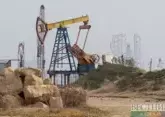The start of drilling at the Karabakh field will approximately come in the fourth quarter of 2019, according to SOCAR's Caspian Drilling International (CDI).
It is planned that the Dede Gorgud semi-submersible drilling rig will be reactivated in September. After which, drilling of the first well will begin.
Norway's Equinor said in a statement that an appraisal well will be drilled at the Karabakh field, and then an exploration well at the Aypara area.
On March 13, Azerbaijan's Caspian Drilling Company and Equinor signed a contract on drilling two wells in the Karabakh field, where Equinor, being the project operator, plans to develop the field together with the State Oil Company of Azerbaijan (SOCAR). Equinor and SOCAR hold equal shares in the project on development of Karabakh field.
Last year, SOCAR and Equinor signed a risk-service agreement on the Karabakh field in the Azerbaijani sector of the Caspian Sea, and a production sharing and exploration agreement on the Dan Ulduzu, Ashrafi and Aypara promising structures.
The Karabakh oil and gas field, discovered in 2000, is located 130 kilometers to the east of Baku. The sea depth in the field varies in the range of 250-450 meters. The initial oil reserves of the field are estimated at 100 million tons.
Head of the 'Caspian Barrel' Center for Oil Research Ilham Shaban told Vestnik Kavkaza that the purpose of drilling the first well is a new valuation of deposit. "The Dede Gorgud semi-submersible drilling rig will drill a well in order to determine what will be produced there - oil, condensate or gas - and in what volumes it can be delivered to domestic and foreign markets," he explained.
According to the expert, natural gas extraction in Karabakh will allow stabilizing the gas market of Azerbaijan. "That is, if enough gas for commercial production is discovered there, it will go to the domestic market to make it more stable. If they find condensate, light oil, it will be exported. If there are additional volumes of oil in Karabakh, it will increase oil production and oil refining in Azerbaijan, which are currently declining. By the end of 2020, it will be clear what exactly the Karabakh field will give to Azerbaijan," Ilham Shaban said.
The head of the 'Caspian Barrel' Center for Oil Research emphasized that drilling to depth of 3.5-4 km does not seem to be technologically difficult for SOCAR.
Economic expert Rovshan Ibrahimov recalled that the agreement on the Karabakh field was signed back in the 1990s, but due to the fact that Karabakh is mainly a gas field, and oil prices declined at that time, its development was delayed. "The new agreement was signed only last year, and it was a risk-service agreement. Therefore, the benefits of Azerbaijan, SOCAR are initially higher in this case," the expert explained.
According to him, preliminary reserves of the Karabakh field are estimated at 100 billion cubic meters of gas and condensate. "In general, Azerbaijan is becoming an oil and gas country instead of just an oil country. Accordingly, the volumes of natural gas that will be produced in the Caspian by Azerbaijan will increase. This is no coincidence, since Azerbaijan plans to gradually increase its export of natural gas to world markets in the future, bringing it to 31 billion cubic meters," the economist said.
"The positive aspect of the new project is that when gas fields are developed, there is also the possibility of producing gas condensate - oil, that is, it will also increase the total oil production. And since oil production is much more profitable, it will also increase incomes from exploitation of Azerbaijani oil and gas fields," Rovshan Ibragimov said.
The expert also said that drilling to a depth of 3-4 km is quite common. "Recently, they drilled to a depth of 8 km or more. This is the future of oil field exploitation" the economist concluded.










